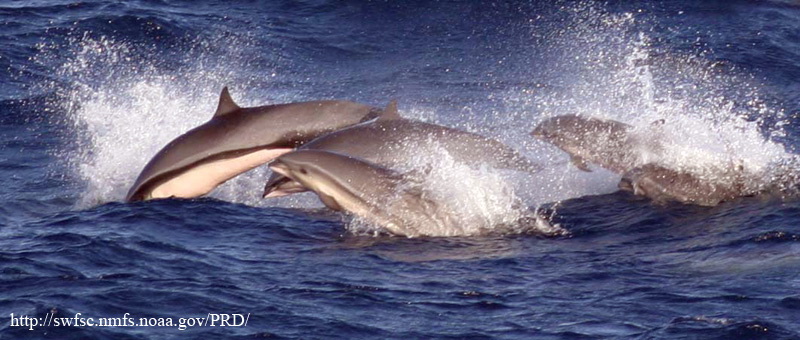|
| Query: dolphin | Result: 18th of 1134 | |
Fraser's Dolphin (Lagenodelphis hosei) - Wiki
| Subject: | Fraser's Dolphin (Lagenodelphis hosei) - Wiki
| |

| Resolution: 800x340
File Size: 127175 Bytes
Date: 2007:09:03 11:19:24
Upload Date: 2007:09:03 11:22:28
|
Fraser's Dolphin
From Wikipedia, the free encyclopedia
[Photo] Fraser's Dolphin Pod. Photo: Protected Resources Division, Southwest Fisheries Science Center, La Jolla, California. http://swfsc.nmfs.noaa.gov/PRD/
Fraser's Dolphin (Lagenodelphis hosei) or Sarawak Dolphin is a cetacean in the family Delphinidae found in deep waters in the Pacific Ocean and to a lesser extent in the Indian and Atlantic Oceans.
Taxonomy
The earliest known interaction between mankind and a Fraser's Dolphin came on a beach in Sarawak, Borneo in 1895. Mr. Charles E. Hose found a skull there and donated it to the British Museum. The scientific specific name is given in his honour. The skull remained unstudied until 1956 when Francis Fraser examined the skull and concluded that it was similar to species in both the Lagenorhynchus and Delphinus genera but not the same as either. A new genus was created by simply merging these two names together.
It wasn't until 1971 that the whole body of a Fraser's Dolphin, as it was by then becoming known, was discovered. At that time washed-up specimens were found on Cocos Island in the eastern Pacific, in South Australia and in South Africa.
Physical description
Fraser Dolphins' are about 1 m long and 20 kg weight at birth, growing to 2.75 m and 200 kg at adulthood. They have a stocky build, a small fin in relation to the size of the body, conspicously small flippers. The dorsal fin and beak are also insubstantial. The upper side is a grey-blue to grey-brown. A dirty cream coloured line runs along the flanks from the beak, above the eye, to the anus. There is a dark stripe under this line. The belly and throat are usually white, sometimes tinged pink. The lack of a prominent is a distinguishing characteristic of the Dolphin. From a distance however it may be confused with the Striped Dolphin which has a similar coloration and is found in the same areas of ocean.
Fraser Dolphins' swim quickly in large tightly-packed groups of about 100 to 1000 in number. Often porpoising, the group chop up the water tremendously. The sight of seeing a large group fleeing from a fishing vessels has been reported as "very dramatic".
The species feeds on pelagic fish, squid and shrimp found some distance below the surface of the water (200???500 metres). Virtually no sunlight penetrates this depth, so feeding is carried out using echolocation alone.
Population and distribution
Though only accounted for relatively recently, the number of reported sightings has become substantial???indicating that the species may not be as rare as thought as recently as the 1980s. However the species is still not nearly as well understood as its more coastal cousins. No global population estimates exist.
The Dolphin is normally sighted in deep tropical waters; between 30° S and 20° N. The Eastern Pacific is the most reliable site for viewings. Groups of stranded dolphins have been found as far afield as France and Uruguay. However these are regarded as anomalous and possibly due to unusual oceanographic conditions, such as El Ni??o.
The species is also relatively common in the Gulf of Mexico but less so in the rest of the Atlantic Ocean.
http://en.wikipedia.org/wiki/Fraser%27s_Dolphin
| The text in this page is based on the copyrighted Wikipedia article shown in above URL. It is used under the GNU Free Documentation License. You may redistribute it, verbatim or modified, providing that you comply with the terms of the GFDL. |
|
Comments |
|---|
| | Guest |
|
Scientific Name: Lagenodelphis hosei (Fraser, 1956)
Common Names:
English – Fraser's Dolphin, Sarawak Dolphin
French – Dauphin de Fraser
Spanish – Delfín de Borneo |
^o^
Animal Pictures Archive for smart phones
^o^
|
|
|

